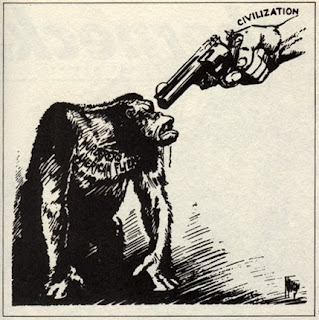I went to the New Orleans Opera to see The Barber of Seville this past fall and one thing in particular struck me: we sang the national anthem before the performance began.
I’ve never been to the New Orleans Opera, in fact I’ve only been to The Met once and the San Francisco Opera once, even though I’ve seen over a hundred operas on video. (They’re just too damn expensive for my poor soul and I’d rather dish out the money only if it’s a new opera, a rare creature these days.) At the other two performances, the national anthem was not played, though, and I assume it normally isn’t. I don’t know why, but it struck me as a bit odd to use it for such a European art form. I mean, we were all there to see an Italian opera. Nationalism is nothing new to opera, but I don’t think it’s ever been done in this way. It usually involves developing a style distinct from that of the operas composed in other countries, or simply using the language of one’s own country.
This might not be obvious to people who don’t listen to opera, but it was historically not composed in one’s native language. Italians had such a stranglehold on the form for so long that Mozart, for instance, wrote most of his operas to Italian language librettos, even if they were premiered in Vienna. It makes me wonder what audiences did to cope back then. Today, if you go to see an opera, you’ll be given supertitles somewhere so you can still understand what the singers are saying but I don’t think this technology existed in the 18th and 19th centuries.
This almost seems like it could explain why opera librettos are often so ridiculously bad: no one really cared about the story. For instance, Anthony Tommasini, writing about seeing Renata Tebaldi performing La Bohème in his youth says:
I had only the vaguest idea of what the opera was about. But listening to her uncannily sumptuous singing, I was overcome with indefinable feelings of longing, sadness, bliss and loss.
Before supertitles, people could enjoy opera purely for the music. Maybe this is part of the reason composers always get top billing in operas while the librettists are often so overlooked that only hardcore fans even know who they are. By contrast, musicals often give equal billing to the composer and the the writer (just look at Rodgers and Hammerstein or even teams that put together psuedo-musicals like Arthur and Sullivan). The difference between musicals and operas here is musicals are usually adapted to the language of their audience. Les Misérables was originally in French but it’s known in England and the US in English. In fact, it’s known in a number of languages as is made obvious by this special performance:
To my understanding, translation of operas is extremely rare, although The Met has begun doing it for works like Mozart’s The Magic Flute. The difficulty lies in how intertwined the words and music become in opera, as attested to in the linked to New York Times article. Translations of writing are difficult enough, let alone singing. There’s also the issue of how absurdly conservative opera audiences are (attested by the fact that there are many many opera houses who put on season after season of works all dated before 1900).
The extent to which this is about nationalism might be questionable, though. The premier of Wagner’s Lohengrin in Italy was actually performed in Italian, for instance. Of all people, Wagner, the pillar and effective founder of German opera, was performed in Italian while he was still alive. I’m fairly certain that he approved and wanted this to happen more often, too. I can’t find it now but I recall a tweet by @CosimaWagner that claimed Wagner expected his operas to be translated. Yet, Wagner was about as nationalistic as composers come.
I’m not sure where I’m going with this. I think my whole point is that this is simply an unusual way of asserting one’s nationality. I understand it for baseball games, it would even make sense to me if they were performing an American opera, but it’s just an unusual coupling with Rossini. Although this wouldn’t be the first time the United States National Anthem has found its way into an opera. I’ll leave you with American music in Italian by Giacomo Puccini, sung beautifully by a Swede:


Recent Comments